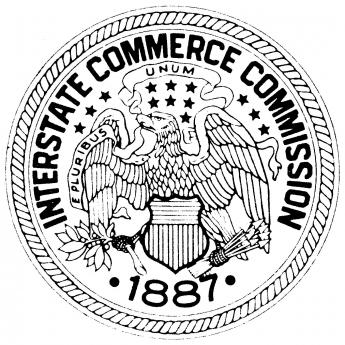Related Topics
Obamacare: Examination and Response
An appraisal of the Affordable Care Act and-- with some guesswork-- its tricky politics. Then, a way to capture major new revenue, even paying down existing Medicare debt, without raising premiums or harming quality care. Then, an offering of reforms even more basic, but more incremental. Finally, the briefest of statements about the basic premise.
ERISA Is Thrust Into the Battle

|
| ERISA |
In 1963 the Studebaker automobile company went bankrupt, leaving half its employees without anyone to pay the promised pension benefits. Congress soon resolved such things should never occur again and convened a Congressional task force to devise a law which would make employee benefits survive, even after the parent company went under. Negotiations took almost ten years and were said to craft a law that could not be amended, thus assuring employees their pensions would be independent of the fortunes of the company itself. Somewhere near the end of this long process, someone asked why it could not extend from pensions to health insurance as well. Almost as an afterthought, health insurance acquired some new features which had never really been considered in the past. ERISA (Employee Retirement Income Security Act) was enacted, signed by President Ford in 1974 and almost immediately began to change the whole discussion of health insurance. The suggestion I would make is that this legislation takes care of interstate health insurance, and seems to have created very little dissension. It might, therefore, contain some features which peacefully solve the same problem of reconciling a mobile and itinerant population with the Tenth Amendment.

|
| Interstate Commerce Commission Seal |
Because the Constitution provided for only a limited set of powers for the Federal Government, and the Tenth Amendment repeated the point for strong emphasis, every power not expressly given to the Federal, and not expressly forbidden to the States, was to be a power of the States. And that included health insurance. The Court-packing uproar of 1937 considerably strengthened the power of the Federal Government to extend its ability to regulate commerce. Indeed, advocates of this movement have been at pains to describe the Interstate Commerce Clause as merely "the Commerce Clause", as if to pretend it had never said anything else. However, the authors of ERISA (the Employee Retirement Insurance Security Act) expressly included pre-emption clauses which rather unnecessarily provide that Federal Law and Regulation should supersede state powers in that area.
There was a conflict here, in which ERISA apparently had to behave as though the Tenth Amendment did not exist. The conflict was never resolved by the Supreme Court, probably because it was so evident that business was delighted to have a thousand mandated benefits in state laws undermined by Federal pre-emptions. Concerted efforts by labor lobbyists had succeeded in putting everything they could imagine into health benefits packages, which were then exempted from income tax. Health insurance became "first dollar coverage", greatly increasing its scope. Because it included many low-cost items, its insurance administrative costs were unduly high; and because it included birth control, it was even a welcome respite for the Court system from the excited lobbyists on both sides of that inflammable issue.
Unfortunately, much of the behavior in the health insurance world is political rather than economic. Consequently, big businesses were mainly interested in is having one fifty-state insurance umbrella rather than in winning arguments in public. The use of federal regulation allowed them to have nation-wide insurance with uniform benefits, and it probably allowed them a wider set of insurance choices at lower prices. Moreover, it helped the Human Resources departments of the major corporations to have their way unhampered, and get rid of such nuisances as obstetrics for male employees. In the original negotiations, labor unions were bought off by allowing them to run their own "independent" health plans, but eventually, they went back to searching law books for loopholes. And the conflict between the "supremacy clause" and the Tenth Amendment was certainly a logical one to pursue because one mandated Federal regulation, and the other precluded it. Twenty-six states place taxes on provider institutions and most of them use the tax money to draw down federal matching money at anywhere from 1:1 to 1:4 levels, which is then returned to hospitals as "disproportionate share hospital" reimbursement. Other states use tax incentives to force third-party administrators to restructure benefits in a way that mirrors regulation.
By far the commonest set of dodges take advantage of judicial opinions that the states could regulate what was insurance, whereas the Federal regulation mostly applied to "self-insurance". The feeble distinction was whether lump sums were paid to an insurance company to distribute, or whether the parent employer distributed the money directly. By extension of this principle, reinsurance was taxed, payments to hospitals were federally regulated. The principle of risk-sharing was dragged into discussions which relegate state regulation of stop-loss arrangements, especially those with low attachment points, as indistinguishable from pure insurance; while self-insurance and experience rating are state regulated. What to do about "pure" insurance with a high deductible is less clear. (This may be one subtle reason why first-dollar coverage, in some ways the least desirable insurance form, is treated as a default, while Catastrophic coverage, which ought to be the basic protection, is relegated to a status bordering on outlandish. By treating huge costs as the responsibility of local charity, this arrangement tends to make them remain so.) That is, by inserting a fictitious intermediary, the regulation supposedly changes from federal to state. The model for this would seem to be one-bank holding companies. Consequently, trial lawyers have taken to suing the fiduciaries of trustees, leading to the comment that "You would have to be a lunatic to agree to be a fiduciary." The longer all of this goes on, the more tangled it will probably become, so the Supreme Court is probably under heavy pressure to pick a suitable case, and decide it.

|
| Affordable Care Act |
Shortly after the Affordable Care Act was passed, big business employers were given a one-year deferral of mandated coverage. The tangle with insurance exchanges for small employers (fewer than 50 employees) does somewhat justify getting that part straightened out, before taking on the much larger issue of employees in the large groups. But there is probably much more to it than that since large employers have the ability to hire assistance in the technicalities, and could probably quickly do many things small employers could not contemplate. Since it was elected to do the more difficult job first, this explanation is unconvincing. We are left uncertain: whether a big business has walked out, is bluffing its intention to walk out later, or has some other use for the extra delay. A secret Republican promise to offer more favorable terms, in exchange for help in the 2014 elections, would probably not be difficult to obtain. Meanwhile, uncertainty whether state mandates for low-cost medical items apply or not hangs over the surprisingly high deductibles being placed on insurance plans in the exchanges. For Catholic voters, it is critical whether they will be compelled to include birth control pills; for Health Savings Accounts, eliminating low-cost state-mandated benefits is important for high-deductibles to work. And for Obamacare, if state-mandated low-cost issues must be covered, it is hard to see how high deductible policies could work, how alternative co-payments can be avoided, and therefore how lowered costs can be imagined.

|
| Henry Kaiser |
Pre-empting state-mandated benefits is not the only issue that could be used for trade. Everybody has been curiously silent about the egregious unfairness of the Henry Kaiser tax exemption for employee benefits, with no deduction at all for the self-employed. The solution seems quite simple: preserve tax neutrality by lowering the tax exemption for employees by about a quarter, but extend the result to everyone. There are so many more employees than self-employed, that the exemption for self-employed could be paid for with quite a small downward adjustment of the exemption for employees. For this tax inequity to persist for seventy years, somebody is being pretty stubborn.
Note: Later in this book we discuss investment returns, and ERISA regulates huge dollar amounts of employee pensions, many of which are in trouble because they are underfunded. Most of the investment is subject to 1-2% fees of one sort or another, which would disappear if the investment switched to index fund investment without fees of more than 0.25%. Rather than let the City of Detroit, or the States of New Jersey and Rhode Island, go bankrupt because of unfunded pensions, it would seem worth-while for some politician to sweep out the investment advisors and purchase index funds. If it seems like a lot of trouble, just imagine what might happen if your political opponent in the next election, suggested it first.
Originally published: Wednesday, January 08, 2014; most-recently modified: Thursday, May 16, 2019